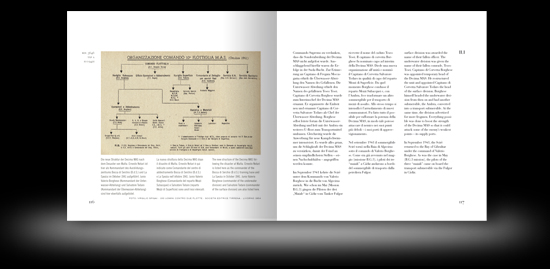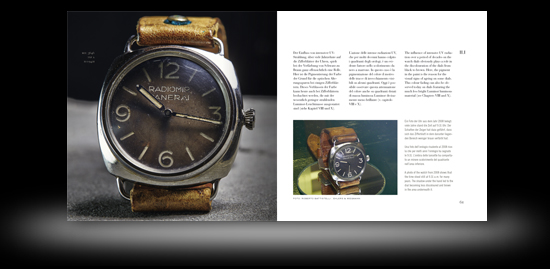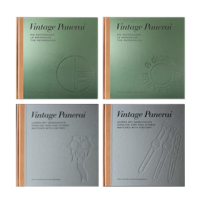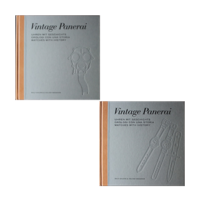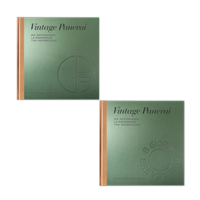Tag: Tesei & Toschi
30 September 1940 – today in history…
by Volker on Sep.30, 2024, under Allgemein
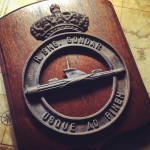 The afternoon of 30 September 1940 marks the end of the mission „Operazione G.A.2“. Just five weeks after the sinking of the Iride, the Gondar (photo: historic crest of the submarine, showing SLC containers on its deck) was the second transport submarine of the Mezzi d’Assalto to be sunk.
The afternoon of 30 September 1940 marks the end of the mission „Operazione G.A.2“. Just five weeks after the sinking of the Iride, the Gondar (photo: historic crest of the submarine, showing SLC containers on its deck) was the second transport submarine of the Mezzi d’Assalto to be sunk.
The submarine Gondar (built in 1937) under the command of Tenente di Vascello Francesco Brunetti was dispatched from La Spezia with Alexandria as her target. On board the Gondar was the officer-in-charge of mission G.A.2, Mario Giorgini, three SLC teams and a reserve team.
When the Gondar reached the target area on 29 September 1940, she received a sobering radio message from reconnaissance: The British fleet had left the Port of Alexandria – so mission G.A.2 was aborted. The Gondar headed now for Tobruk and was already on its return journey when it was discovered by the Australian destroyer, HMAS Stuart. A second destroyer, HMS Diamond and a corvette now tracked the Gondar throughout the night alongside HMAS Stuart.
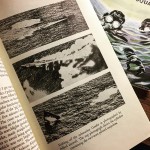 After hours of attempting to evade capture, the Gondar gave up in the early hours of 30 September 1940. Commander Brunetti gave the order to dive down and abandon the Gondar, which effectively saved his team and the SLC pilots from going down after being sunk by the mighty enemy. A British Sunderland flying boat bombarded the Gondar while the crew was already in the water – effectively sealing the fate of the second transport submersible for SLCs (see historic photos on the left). For one of the two inventors of the new weapon, Elios Toschi, this second journey was also to be his last. He was taken prisoner by the British alongside the crew of the Gondar and his comrades – “missione fallita”.
After hours of attempting to evade capture, the Gondar gave up in the early hours of 30 September 1940. Commander Brunetti gave the order to dive down and abandon the Gondar, which effectively saved his team and the SLC pilots from going down after being sunk by the mighty enemy. A British Sunderland flying boat bombarded the Gondar while the crew was already in the water – effectively sealing the fate of the second transport submersible for SLCs (see historic photos on the left). For one of the two inventors of the new weapon, Elios Toschi, this second journey was also to be his last. He was taken prisoner by the British alongside the crew of the Gondar and his comrades – “missione fallita”.
The launch of the new weapon appeared to be ill-fated: Two operations (G.A.1 and G.A.2) failed, two valuable transport submersibles had been sunk and four SLC teams and their officers-in-charge had been taken as prisoners of war. It was to take over a year until another attempt could be made to penetrate the Port of Alexandria in December 1941…
Read more about “The birth of a legend – the first Panerai watches (1935-1939)” in chapter I on page 34-39, followed by the timeline of the missions during the Second World War in chapter II.I on page 106-109. Mario Giorgini, officer-in-charge of the mission G.A.2 is also featured in the second volume of “The References” on page 1016-1022. The Gondar is also featured in our book “History1” in chapter IV on page 288-357.
21 August 1940 – today in history…
by Volker on Aug.21, 2024, under Allgemein
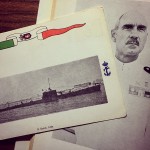 Gulf of Bomba (Lybia). In August 1940, the time had finally come to put the new SLC weapon to the test. Alexandria in the eastern Mediterranean was the main base of the British Mediterranean fleet. The battleships at anchor there were the first targets for missions of the Mezzi d’Assalto involving the SLCs.
Gulf of Bomba (Lybia). In August 1940, the time had finally come to put the new SLC weapon to the test. Alexandria in the eastern Mediterranean was the main base of the British Mediterranean fleet. The battleships at anchor there were the first targets for missions of the Mezzi d’Assalto involving the SLCs.
The transport submersible Iride, under the command of Tenente di Vascello Francesco Brunetti, prepared for its tour of duty with the SLCs on 21 August 1940, ready to attack the Port of Alexandria in the night of 25/26 August 1940. Eleven servicemen with four SLCs aboard the torpedo boat Calipso were dispatched to the Gulf of Bomba on the Libyan coast. There, the SLCs were tested at held ready for departure until they were ready to launch mission G.A.1 a few days later with the submersible Iride.
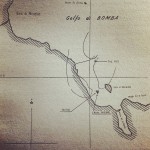 Right at the start of its test run, however, the submersible Iride was spotted by three Fairey Swordfish torpedo bombers, which had launched from the aircraft carrier HMS Eagle. The enemy bombers began their attack straight away (see historic map on the left).
Right at the start of its test run, however, the submersible Iride was spotted by three Fairey Swordfish torpedo bombers, which had launched from the aircraft carrier HMS Eagle. The enemy bombers began their attack straight away (see historic map on the left).
The shallow water in the Gulf of Bomba prevented the Iride from descending quickly. Instead, it attempted to ward off the attack at full speed with its anti-aircraft cannons. At the same time, Brunetti tried in vain to direct the bow of the submersible towards the attackers in order to reduce the area of the Iride exposed to attack. However, the Iride was soon hit by a torpedo and sank. The boats quickly dispatched to the scene managed to rescue some of the shipwrecked crew members from the Iride. A dramatic race against time began.
 The SLC teams under Gino Birindelli (right in the photo), Teseo Tesei, Elios Toschi, Luigi Durand de la Penne and Emilio Bianchi dived straight down to the wreck of the Iride in order to save the survivors who were trapped down there. Although the equipment belonging to the SLC pilots on board the Iride was lost, but the three SLCs were recovered for use in later missions. The SLCs pilots returned to the Bocca di Serchio on board the Calipso.
The SLC teams under Gino Birindelli (right in the photo), Teseo Tesei, Elios Toschi, Luigi Durand de la Penne and Emilio Bianchi dived straight down to the wreck of the Iride in order to save the survivors who were trapped down there. Although the equipment belonging to the SLC pilots on board the Iride was lost, but the three SLCs were recovered for use in later missions. The SLCs pilots returned to the Bocca di Serchio on board the Calipso.
During the rescue of the survivors from the Iride, they had pushed themselves to the very limit of what was humanly possible. Loss of human life and equipment was the sobering result of the first mission „Operazione G.A.1“ with the new weapon of the Mezzi d’Assalto.
Read more on Gino Birindelli, one of the surviving SLC teams, in chapter VIII.II on page 1014-1043 or click also here. More information on the historic content in our “The References” book set can be found here. Read about the featured watches from Guido Panerai & Figlio in the first and second volume here.
Missions and Watches of the Decima MAS
by Volker on May.29, 2024, under Allgemein
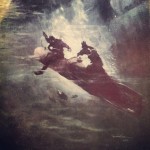 Watches from Guido Panerai & Figlio are deeply connected to the history of the Royal Italian Navy during the Second World War. In our book “The References” we have included an overview of the missions of the “Decima” aside the legendary watches, which were an important part of the units of the underwater (“Mezzi Subacquei” / “Gamma” frogmen and SLC) and surface (“Mezzi di Superficie” / explosive boats) special forces of the Decima MAS (“Mezzi d’Assalto”).
Watches from Guido Panerai & Figlio are deeply connected to the history of the Royal Italian Navy during the Second World War. In our book “The References” we have included an overview of the missions of the “Decima” aside the legendary watches, which were an important part of the units of the underwater (“Mezzi Subacquei” / “Gamma” frogmen and SLC) and surface (“Mezzi di Superficie” / explosive boats) special forces of the Decima MAS (“Mezzi d’Assalto”).
After the disaster at Malta in July 1941 (“Operazione Malta 1”), the Decima MAS was restructured. Capitano di Fregata Ernesto Forza became the new commander of the Decima MAS. The underwater division was given the name of the fallen inventor of the SLC, Teseo Tesei, now commanded by Junio Valerio Borghese. The surface division was given the name of the fallen commander of the Decima, Vittorio Moccagatta, now commanded by Salvatore Todaro (the photo below shows a historical chart of the new structured Mezzi d’Assalto as of October 1941).
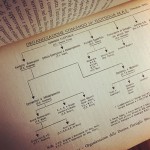 Chapter I and II of the first volume (1930’s-1940’s) carry the history of a new weapon – the SLC slow running torpedo, called “maiale” – and the men who trusted on the watches from Guido Panerai & Figlio during their dangerous missions in deep and darkness of the mediterranean sea. Because of the significance of the fascinating history behind these watches, we have dedicated our book “The References” to the inventors of the SLC, Teseo Tesei and Elios Toschi.
Chapter I and II of the first volume (1930’s-1940’s) carry the history of a new weapon – the SLC slow running torpedo, called “maiale” – and the men who trusted on the watches from Guido Panerai & Figlio during their dangerous missions in deep and darkness of the mediterranean sea. Because of the significance of the fascinating history behind these watches, we have dedicated our book “The References” to the inventors of the SLC, Teseo Tesei and Elios Toschi.
Chapter II of “The References” features some of the rarest Panerai watches owned by famous and high decorated Italian veterans. The first watch of the Reference 3646 / Type A, featured in chapter II.I, belonged to Admiral Ernesto Notari. He was awarded with the Silver Medal for Gallantry at War (M.A.V.M.) for the mission B.G.6 in May 1943.
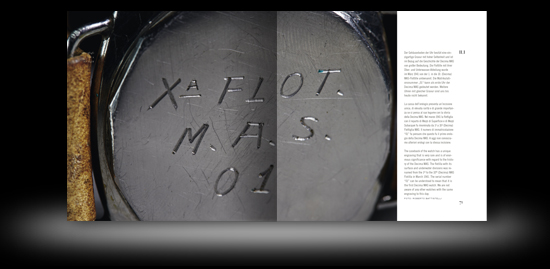
The documentation of the watch (see above page 70-71) and the history of Ernesto Notari, including a summary of the “Mezzi d’Assalto” missions until 8 September 1943 can be read from page 58 to 153 in chapter II.I.
Chapter II.II, about the watches of the Reference 3646 / Type B, features the watch of the legendary “Gamma” frogman Luigio Ferraro. He was awarded with the Gold Medal for Gallantry at War (M.O.V.M.) for his “Stella” missions in the eastern part of the mediterranean sea in 1943.
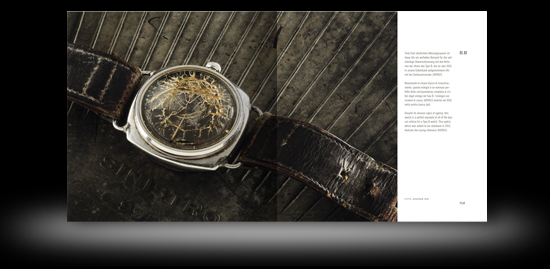
The documentation of the watch (see above page 190-191) and the history of Luigi Ferraro can be read from page 190 to 225 in chapter II.II.
A watch of the Reference 3646 / Type C which belonged to the SLC pilot Licio Visintini is featured in chapter II.III. Visintini took part in several missions against the allied fleet in Gibraltar. After surviving from mission B.G.3 and B.G.4 in 1941, Visintini returned undercover to Gibraltar in June 1942 where he built the core of the “Orsa Maggiore” on board the tanker Olterra – the hidden base for the SLC units of the “Decima” in the bay of Gibraltar. Mission B.G.5 turned into a “mission with no return” for Licio Visintini in December 1942…
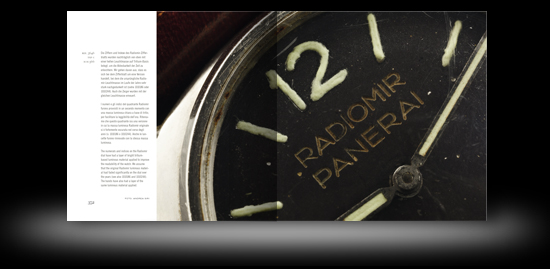
The documentation of the watch (see above page 352-353) and the history of Licio Visintini can be read from page 350 to 397 in chapter II.III.
Information on “The References” 1930’s-1940’s (first volume) can be found here.
Enjoy reading!
[Ralf Ehlers & Volker Wiegmann]
Mezzi d’Assalto
by Volker on Apr.14, 2024, under Allgemein
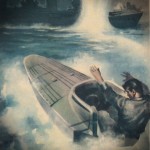 Just a few days before the first success of the MT explosive boats on 26 March 1941 in Souda Bay, the 1st MAS Flotilla changed its name and became the 10th MAS Flotilla – the Decima MAS on 15 March 1941. Capitano di Fregata Vittorio Moccagatta was the new commander and divided the special weaponry – Mezzi d’Assalto – into two divisions:
Just a few days before the first success of the MT explosive boats on 26 March 1941 in Souda Bay, the 1st MAS Flotilla changed its name and became the 10th MAS Flotilla – the Decima MAS on 15 March 1941. Capitano di Fregata Vittorio Moccagatta was the new commander and divided the special weaponry – Mezzi d’Assalto – into two divisions:
The surface division – Mezzi di Superficie – under the command of Capitano di Corvetta Giorgio Giobbe (see photo on page 115, commander Giobbe wearing clearly visible a Panerai watch on his right wrist) had a fleet of various explosive boats (category MT, MTM, MTR, MTS, MTMS, SMA and MTL) for sabotage operations, based in La Spezia.
 The underwater division – Mezzi Subacquei – under the command of Capitano di Corvetta Junio Valerio Borghese operated the diving School in Livorno, the SLC training base at Bocca di Serchio, the transport submersibles (Scirè and Ambra) and the frogmen of the “Gruppo Gamma”.
The underwater division – Mezzi Subacquei – under the command of Capitano di Corvetta Junio Valerio Borghese operated the diving School in Livorno, the SLC training base at Bocca di Serchio, the transport submersibles (Scirè and Ambra) and the frogmen of the “Gruppo Gamma”.
After the desaster at Malta in July 1941 (“Operazione Malta 1”), the Decima MAS was restructured. Capitano di Fregata Ernesto Forza became the new commander of the Decima MAS. The underwater division was given the name of the fallen inventor of the SLC, Teseo Tesei, now commanded by Junio Valerio Borghese. The surface division was given the name of the fallen commander of the Decima, Vittorio Moccagatta, now commanded by Salvatore Todaro. See page 116 with a historical chart of the new structured Mezzi d’Assalto as of October 1941:
Ernesto Notari became commander of the SLC training base at Bocca di Serchio. His Ref. 3646 / Type A “Radiomir Panerai” (with its unique engraved caseback) is documented on page 58 – 91.
Read more about the Mezzi d’Assalto on page 92 – 153 in chapter II.I of the book “The References” 1930’s-1940’s.
Inventors, pilots and a royal visitor…
by Volker on May.14, 2023, under Allgemein
The first watches for the pilots of the “new weapon” SLC were delivered in the middle of the 1930’s by Guido Panerai & Figlio to the Commando del 1° Gruppo Sommergibili of the Royal Italian Navy. According to the timeline of the development of the top secret slow running torpedos (siluro a lenta corsa, short: SLC) by the inventors Teseo Tesei and Elios Toschi, waterproof and luminous instruments for the pilots were necessary to carry out proper exercises and to control the SLC in depth and darkness.
 The chapters I and II, dedicated to the first watches for underwater use (Ref. 2533 and 3646) take the readers of our book “The References” 1930’s-1940’s into these early years. Teseo Tesei and Elios Toschi’s ideas became real. But strategic decisions after the Italo-Ethiopian War stopped the secret SLC project. The tests with these small weapons were archived and the Royal Italian Navy focused their interest in huge battleships, cruisers and destroyers.
The chapters I and II, dedicated to the first watches for underwater use (Ref. 2533 and 3646) take the readers of our book “The References” 1930’s-1940’s into these early years. Teseo Tesei and Elios Toschi’s ideas became real. But strategic decisions after the Italo-Ethiopian War stopped the secret SLC project. The tests with these small weapons were archived and the Royal Italian Navy focused their interest in huge battleships, cruisers and destroyers.
The SLC project was re-started by the 1st Flottiglia MAS in 1939 at the advent of the Second World War. With the first missions of the Mezzi d’Assalto carried out from August 1940 onwards, the demand for skilled operators as well as new equipment – and more instruments for the operators – grew fast. An early Ref. 3646 / Type A, dated to April 1940, is featured in chapter II.I followed by the timeline of the missions carried out by the operators of the Decima Flottiglia MAS, the special commandos of the Royal Italian Navy.
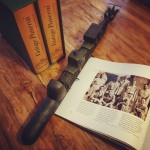 The photo shows page 96 of “The References” with a historic photo from June 1940: The two inventors of the SLC, Teseo Tesei and Elios Toschi, Alberto Franzini and Gino Birindelli above their co-pilots stand together with a royal visitor: Principe Aimone di Savoia Aosta, Duca di Spoleto – just a few weeks before the first missions of the new weapon SLC were about to write naval history.
The photo shows page 96 of “The References” with a historic photo from June 1940: The two inventors of the SLC, Teseo Tesei and Elios Toschi, Alberto Franzini and Gino Birindelli above their co-pilots stand together with a royal visitor: Principe Aimone di Savoia Aosta, Duca di Spoleto – just a few weeks before the first missions of the new weapon SLC were about to write naval history.
Read more about “The birth of a legend – the first Panerai watches (1935-1939)” in chapter I, followed by the timeline of the missions during the Second World War in chapter II.I – more information on the historic content in our “The References” book set with a total of 1392 pages can be found here. Read about the featured watches from Guido Panerai & Figlio in the first and second volume here.
“Two smurfs riding a carrot?”
by Volker on Aug.08, 2016, under Allgemein
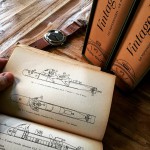 …no, thats not the way we would describe the illustration of a SLC (which still represents a piece of the heritage on some of the latest Panerai watches e.g. PAM00425 or PAM00577, ). Even during its development in the “early days” before the Second World War, it was nicknamed “maiale” (pig) from those who were testing it at Porto Santo Stefano, La Spezia and Bocca di Serchio from October 1935 to August 1936.
…no, thats not the way we would describe the illustration of a SLC (which still represents a piece of the heritage on some of the latest Panerai watches e.g. PAM00425 or PAM00577, ). Even during its development in the “early days” before the Second World War, it was nicknamed “maiale” (pig) from those who were testing it at Porto Santo Stefano, La Spezia and Bocca di Serchio from October 1935 to August 1936.
Looking back into the history of the legendary “Human Torpedo” (as it was often named), one of the inventors of the SLC (Siluro a lenta Corsa / slow running torpedo), Elios Toschi, once described the two-man torpedo as “a mini, electrically powered submersible with a completely new design, whose crew (pilot and copilot) ride the torpedo in a sitting position and will thus be able to target enemy ports at night in cover of darkness using luminescent instruments to navigate. On their way to their targets, they are in a position when underwater to be able to cut through net barricades, remove obstacles and operate with great endurance at depths of up to 30 metres thanks to their breathing equipment…”
Read more about “The birth of a legend – the first Panerai watches (1935-1939)” in chapter I, followed by the timeline of the missions of the Mezzi d’Assalto during the Second World War in chapter II.I – more information on the historic content in our “The References” book set with a total of 1392 pages can be found here and here. Read about the featured watches from Guido Panerai & Figlio in the first and second volume here.
From G.A.1 to B.G.7: Missions of the Decima MAS
by Volker on Mar.20, 2016, under Allgemein
 Watches from Guido Panerai & Figlio are deeply connected to the history of the Royal Italian Navy during the Second World War. In our new book “The References” we have included an overview of the missions of the “Decima” aside the legendary watches, which were an important part of the units of the underwater (“Mezzi Subacquei” / “Gamma” frogmen and SLC) and surface (“Mezzi di Superficie” / explosive boats) special forces of the Decima MAS (“Mezzi d’Assalto”).
Watches from Guido Panerai & Figlio are deeply connected to the history of the Royal Italian Navy during the Second World War. In our new book “The References” we have included an overview of the missions of the “Decima” aside the legendary watches, which were an important part of the units of the underwater (“Mezzi Subacquei” / “Gamma” frogmen and SLC) and surface (“Mezzi di Superficie” / explosive boats) special forces of the Decima MAS (“Mezzi d’Assalto”).
Chapter I and II of the first volume (1930’s-1940’s) carry the history of a new weapon – the SLC slow running torpedo, called “maiale” – and the men who trusted on the watches from Guido Panerai & Figlio during their dangerous missions in deep and darkness of the mediterranean sea. Because of the significance of the fascinating history behind these watches, we have dedicated our new book “The References” to the inventors of the SLC, Teseo Tesei and Elios Toschi.
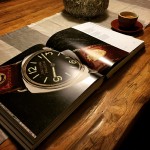 Chapter II of “The References” features some of the rarest Panerai watches owned by famous and high decorated Italian veterans. The first watch of the Reference 3646 / Type A, featured in chapter II.I, belonged to Admiral Ernesto Notari. He was awarded with the Silver Medal for Gallantry at War (M.A.V.M.) for the mission B.G.6 in May 1943. The documentation of the watch and the history of Ernesto Notari, including a summary of the “Mezzi d’Assalto” missions until 8 September 1943 can be read from page 58 to 153 in chapter II.I.
Chapter II of “The References” features some of the rarest Panerai watches owned by famous and high decorated Italian veterans. The first watch of the Reference 3646 / Type A, featured in chapter II.I, belonged to Admiral Ernesto Notari. He was awarded with the Silver Medal for Gallantry at War (M.A.V.M.) for the mission B.G.6 in May 1943. The documentation of the watch and the history of Ernesto Notari, including a summary of the “Mezzi d’Assalto” missions until 8 September 1943 can be read from page 58 to 153 in chapter II.I.
Chapter II.II, about the watches of the Reference 3646 / Type B, features the watch of the legendary “Gamma” frogman Luigio Ferraro. He was awarded with the Gold Medal for Gallantry at War (M.O.V.M.) for his “Stella” missions in the eastern part of the mediterranean sea in 1943. The documentation of the watch and the history of Luigi Ferraro can be read from page 190 to 225 in chapter II.II.
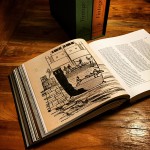 A watch of the Reference 3646 / Type C which belonged to the SLC pilot Licio Visintini is featured in chapter II.III. Visintini took part in several missions against the allied fleet in Gibraltar. After surviving from mission B.G.3 and B.G.4 in 1941, Visintini returned undercover to Gibraltar in June 1942 where he built the core of the “Orsa Maggiore” on board the tanker Olterra – the hidden base for the SLC units of the “Decima” in the bay of Gibraltar (see coffee table shot on the left). Mission B.G.5 turned into a “mission with no return” for Licio Visintini in December 1942… The documentation of the watch and the history of Licio Visintini can be read from page 350 to 397 in chapter II.III.
A watch of the Reference 3646 / Type C which belonged to the SLC pilot Licio Visintini is featured in chapter II.III. Visintini took part in several missions against the allied fleet in Gibraltar. After surviving from mission B.G.3 and B.G.4 in 1941, Visintini returned undercover to Gibraltar in June 1942 where he built the core of the “Orsa Maggiore” on board the tanker Olterra – the hidden base for the SLC units of the “Decima” in the bay of Gibraltar (see coffee table shot on the left). Mission B.G.5 turned into a “mission with no return” for Licio Visintini in December 1942… The documentation of the watch and the history of Licio Visintini can be read from page 350 to 397 in chapter II.III.
Information on “The References” 1930’s-1940’s (first volume) can be found here.
Enjoy reading!
[Ralf Ehlers & Volker Wiegmann]

